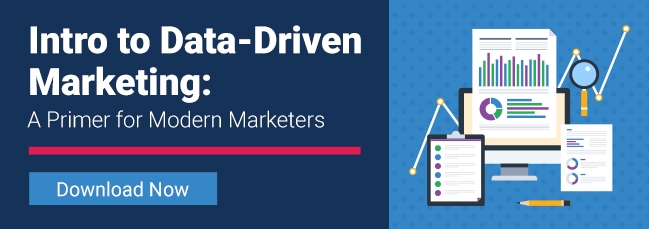Marketing
Watch Out for These 3 Data-Driven Marketing Obstacles
by clickdimensions

There are two essential roles for data in the digital space today. First, data acts as fuel, feeding into automated systems and processes to power them. The second function for data is as decision support – helping to determine the best course of action in each initiative.
These data functions can help us better understand data-driven marketing as well. Data-driven marketing is defined as the process of collecting and utilizing marketing data and making decisions based on that data. Organizations that practice data-driven marketing focus on uncovering trends, creating and executing on opportunities, and increasing the effectiveness of marketing efforts through data.
It is extremely effective too. Organizations that utilize data-driven marketing realize significant benefits.
However, realizing the significant benefits of data-driven marketing doesn’t come without its challenges. Many marketing teams face considerable obstacles when working to put data at the heart of their marketing strategies, tactics and processes. There are three main challenges.
The Problems
1. The proliferation of tools and data sources. Marketing channels and technology stacks have expanded rapidly in recent years. The proliferation of MarTech has created multiple silos of data with ever-increasing volumes. On average, marketers must keep up with data from 16 different data sources. That’s up from 10 data sources just two years ago! The plethora of channels and tools used by today’s businesses can often lead to a fragmented and incomplete view of marketing and sales performance. And while marketing technology is needed and helpful, the addition of each new tool exacerbates the problem in absence of a unified view of results.
2. Siloed data. The disconnect between CRM data and all the different marketing activity across tools hinders proper attribution of revenue and accurate ROI reporting. It creates an incomplete or absent view of which activities – sales or marketing – are producing real results. This leads to increasing conflict between sales and marketing and an inability to identify where to direct scarce business resources to drive revenue. Data siloes can also lead to data and reporting inaccuracies.
3. Limited resources. Building effective marketing reporting in traditional business intelligence (BI) tools can be a huge undertaking and taxes the resources that marketing departments often find themselves short on – time and money. In addition, marketing teams often don’t have all the necessary skillsets in-house. Implementing a traditional BI solution typically requires more than six distinct skillsets and nearly 1,000 hours of effort across multiple functions of the business. The costs can exceed $200,000 for the initial build, and ongoing maintenance is required.
The Solution
Adopting the right technology is essential for data-driven marketing success. Marketing data requires technology that was built for it. Marketers need a simple solution that brings all their data into a single view. Marketing dashboards provide that with analytics tools that are built for marketers, by marketers with easy on-demand access to campaign and channel performance as well as marketing impact on revenue. Marketing dashboards are different because they specialize in the collection, blending, visualization and collaboration of marketing data – without the price tag or burden on resources associated with adopting traditional business intelligence solutions for marketing purposes.







